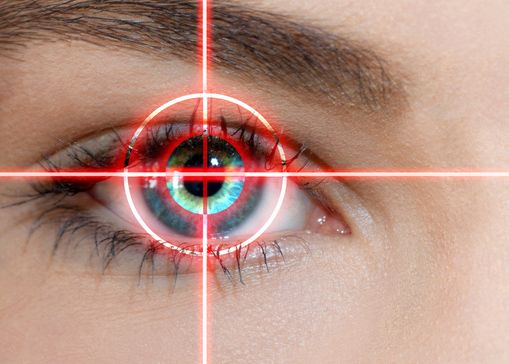
Dr. Andrew Holzman is pleased to offer a state-of-the-art approach to treating presbyopia at his Washington, DC eye care centers. This treatment option is known as the KAMRA™ inlay, a type of corneal implant. We’d like to go over the basics of the KAMRA™ inlay right now.
About KAMRA™ Inlays
KAMRA™ inlays are an advanced treatment option for presbyopia that eliminates the need for glasses and contact lenses. The KAMRA™ inlay is a small synthetic ring placed in the patient’s non-dominant eye through a small incision in the cornea, enhancing near vision and improving overall eyesight in the process.
About LASIK Surgery
LASIK surgery is a type of refractive procedure that uses lasers to reshape a patient’s cornea. This improves the passage of light through a patient’s eyes, allowing it to focus properly on the retina.
Monovision LASIK, as noted above, functions in a similar manner as KAMRA™ inlay treatment, with a surgeon only performing LASIK on a single eye to enhance overall vision.
Why LASIK May Cause Concerns with KAMRA™ Inlays
Some people wonder if LASIK surgery affects candidacy for KAMRA™ inlays later in life. The reason for this has to do with changes made to the cornea during LASIK surgery. Since both LASIK correction and KAMRA™ inlay placement involve surgery on the cornea, some patients wonder if the LASIK procedure makes future corneal procedures unlikely.
Can a Person Get KAMRA™ Inlays After LASIK?
Yes.
Thankfully, people who have undergone LASIK earlier in life (e.g., to treat common refractive errors) can still get a KAMRA™ inlay placed if they so choose. All that is required is meeting general candidacy requirements for having a KAMRA™ inlay placed.
Ideal Candidates for KAMRA™ Inlays
Good candidates for KAMRA™ inlays include the following:
- Between 45 and 60 years old
- Have healthy corneas
- Have normally shaped pupils
- Have good tolerance for monovision
- Understand the risks and benefits involved
During the consultation process, we will assess your candidacy for the procedure and even provide you with a contact lens to help simulate monovision. This will give you a good idea of what to expect from the procedure.
How Are the Results of KAMRA™ Inlay Treatment?
KAMRA™ inlay treatment offers results that are comparable to monovision LASIK, with patients being able to see clearly and enjoy a high quality of life without the cumbersome need for glasses or contacts. We’d be more than happy to answer more of your question about KAMRA™ inlays and other presbyopia treatments during your visit to the practice.
Contact Dr. Andrew Holzman
To learn more about your options for advanced eye care, be sure to contact our laser eye surgery center today. Dr. Andrew Holzman and his team will help you make smart decisions when it comes to your vision and overall wellness.



